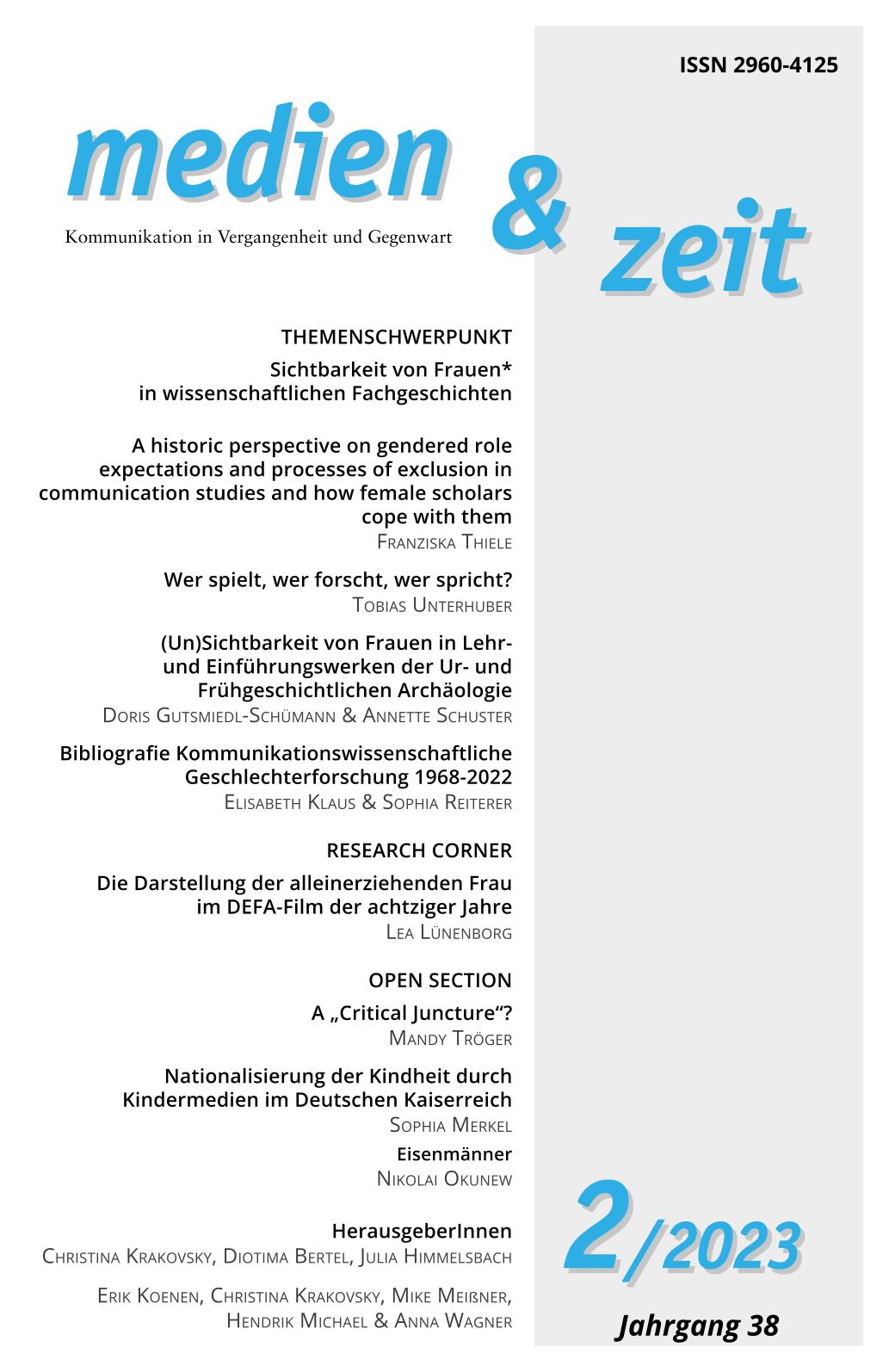Eisenmänner
Die Heavy-Metal-Subkultur der DDR
Keywords:
Media history, subculture, history of emotions, heavy metal, GDRAbstract
As a seemingly apolitical subculture, the GDR's heavy metal scene has received little attention. On the basis of archival sources, scene publications and interviews, however, it can be shown that this pop-musically motivated scene – driven by the development of the Western and global media landscape – grew to a considerable size in the late 1980s, spawned over 100 bands and was even successful in capturing state radio. The deviation from the Marxist-Leninist state ideology and the associated emotional regime did not take place on an explicitly political level, but on an everyday aesthetic and physical level, which was particularly evident at the numerous concerts. The focus on the Heavy metal fans thus points not only to the claims that the ruling party made over the bodies of GDR youth even shortly before its demise, but also to the lack of power to enforce these claims.
Additional Files
Published
How to Cite
License
Copyright (c) 2024 Nikolai Okunew

This work is licensed under a Creative Commons Attribution-NonCommercial-NoDerivatives 4.0 International License.
Public access to articles in the journal medien & zeit is free of charge, at no charge to authors, and is available to all readers under the Creative Commons Attribution-NonCommercial-NoDerivatives 4.0 license. The rights for the contributions belong to the respective authors (no apc).



